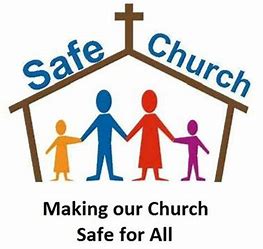(From The Bang-up-to-Date Improvised Version)
by Anon

The Parable of the Sower
Jesus told them many things in parables, saying: “A church leader went out to sow some safeguarding seed. But some fell along the path, and the birds came and ate it up. Others seed fell on rocky places, where it did not have much soil. Though it sprang up quickly, when the sun came up, the plants withered because they were scorched and had no soil for root. Other seed fell among thorns, which choked the plants.”
The disciples asked, “What on earth is the meaning of this parable?”
And Jesus replied: “The safeguarding seed is good, but it needs proper soil to grow, and an expert planter that knows what they are doing. In this parable, the ground is the church. The birds are the individuals who know how to steal the seed before it takes root. The rocks are the committees at diocesan level, who look as though they will support and sustain the seed. But this is bad soil, and after a brief growth spurt, the plant wilts and dies. All Diocesan soil is like this.
“But the weeds are the national-level bodies that do not want good things to grow. They hate righteous and proper processes that are rooted in justice, accountability, truth and sustainable goodness. Like weeds, they seek to block the light from the plants that are sown under them. These weeds will always strangle the life out of anything good. These are the thistles and knotweed that I have warned you about before. Beware of the leavening bad influence of these Teachers of the Law, and the Sadducees, Scribes and Pharisees, for they undermine and overshadow everything that comes near them.”
The Parable of the Weeds
Then Jesus told them another parable about weeds: “The church is like a pastor-farmer who sowed good safeguarding seed in God’s field. But while everyone was asleep, an enemy came and deliberately planted weeds among the wheat. So when the wheat sprouted and formed heads, weeds also appeared.”
“The farmworkers came to the pastor-farmer and said, ‘Did you not sow the good seed in your field? So where did these weeds come from?’ The pastor-farmer replied: ‘An enemy did this’. The farmworkers asked, ‘Do you want us to go and pull them up?’
The pastor-farmer replied ‘No, because while you pull up the weeds, you will uproot the wheat with them. Let both grow together until the harvest. Then I will tell the harvesters to collect the weeds and tie them in bundles to be burned, and then to gather the wheat and bring it into my barn.’”
The Parable of the Weeds Explained
Later, the disciples came to Jesus and asked him to explain the parable of the weeds in the field. Jesus said: “The one sowing the safeguarding seed is a faithful servant, and committed to justice, truth and the church being a good place where all can grow and flourish. The field is the church.”
“The weeds are those who want to place impediments in the way of those who seek justice and truth, and bring light to the places of darkness, and life to the barren. The weeds are those who seek to uproot the victims of abuse and survivors seeking justice. The weeds seek to strangle the life and light out of systems that yield transparency, accountability, justice and truth.”
“The weeds are the work of the enemy, but the weeds think the field of the church is theirs to grow in, and so they cultivate it for themselves. The weeds pretend to be good angels, but in reality they are just agents of the enemy. The weeds seek to destroy or delay the day of harvest and reckoning. All of their resources seek to cover up everything up and stop the seeds of truth sprouting. The weeds stop the light getting to the ground, and they conceal all manner of evil and corruption.”
The harvesters are the true angels – experts, advocates and supporters – who will fight and campaign to have the weeds removed and the ground cleared, so that the good safeguarding seed can grow. They toil away at the ground level, trying to enrich the soil, and so work tirelessly to remove the stones and rocks. They also know who plants the weeds.”
The Parables of the Mustard Seed and the Sourdough
Jesus told them another parable: “Safeguarding is like a mustard seed, which someone took and planted in their field. It is the smallest of all seeds, yet when it grows, it is the largest of garden plants and becomes a tree, so that the birds come and perch in its branches, and find safety in their nests and the shelter of the branches.”
Jesus told them another parable: “Safeguarding is like the special mould that a person baking bread takes and mixes into their blend flour, until it is all worked through into the sourdough ready for baking.”
The Parables of the Mustard Seed and the Sourdough Explained
The disciples again asked Jesus “What on earth do you mean by these parables?”
Jesus said to them: “The mustard tree is what the church is meant to become – a place of abundant life, fragrant blossom, seeds, fruit, shade, shelter, support for nesting birds and their young, many insects, moss and more besides. The church is from the tiniest seed of faith. As a tree, it cannot choose what it hosts, and for whom it provides food, home and shade.”
The disciples were puzzled, and asked Jesus why he did not speak of yeast, but chose instead to speak of common leaven.
Jesus replied: “Nobody has any yeast at home, as it is so rare and expensive. A baker can make bread that is unleavened and flat. Or, the baker can use their own leaven – the culture-mould that every household possesses. When I have told you before of the need to ‘guard against the leaven of Scribes and the Pharisees’, I infer their culture-mould will corrupt every batch of dough. Their bread will either be puffed-up and full of hot air. Or, it will be dense, lifeless and sour-tasting. The leaven of the Scribes and Pharisees is like the rulers of the church: their influence corrupts everything.”
Jesus did not say anything to them without using a parable. So was fulfilled what was spoken through the prophets: “I will open my mouth in parables, I will utter things hidden since the creation of the world. To those who have ears, listen”.
Commentary
Leslie Hunter, in The Seed and the Fruit (SCM, 1953, p.12), offers this parable: As the threats of war and the cries of the dispossessed were sounding in our ears, humanity fell into an uneasy sleep. In our sleep we dreamed that we entered the spacious store in which the gifts of God to humanity are kept, and addressed the angel behind the counter, saying: ‘We have run out of the fruits of the Spirit. Can you restock us?’ When the angel seemed about to say ‘no’, we burst out: ‘In place of violence, terrorism, war, afflictions and injustice, lying and lust, we need love, joy, peace, integrity, discipline. Without these we shall all be lost’. And then the angel behind the counter replied, ‘We do not stock fruits here. Only seeds.’ There are only safeguarding seeds. It is such a pity about the soil.






